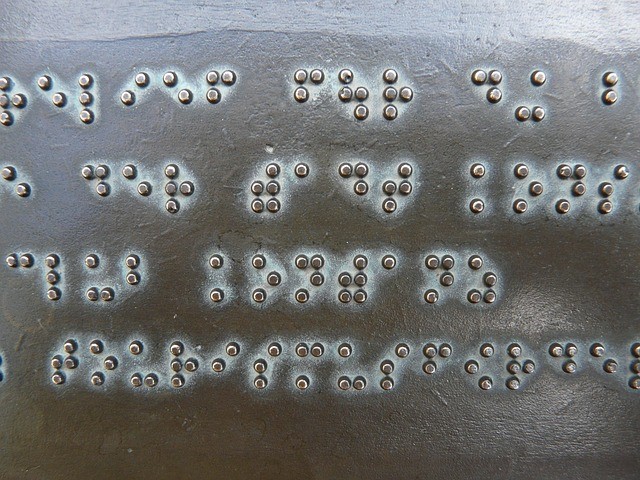What is braille and where did it orginate?
Though commonly mistaken for a language, braille is actually a reading system for the visually impaired, and comes in many languages such as French, English, Chinese and Hebrew.
Braille is made up of small rectangular blocks called cells that contain bumps called raised dots. I’ve wondered before, why not just raise words on paper as a means of reading for the blind? But it was tried in the 1800’s and apparently was a cumbersome and slow process. Braille is named after its French creator, Louis Braille, born on the 8th of January 1809. at the age of 5 Braille lost an eye when he was playing with his father’s tools and lost the other one to infection soon after. Luckily, Braille’s parents went against the norm and raised their blind child like a normal one, and Braille soon made it into one of the first schools for the blind in the world, the ‘Royal Institute for the Blind Youth’ in France and excelled there. Braille had completed most of his reading system by the tender age of 15, having based it on a failed military communications project called ‘Night writing’. Braille would go on to teach algebra, history and geometry at his school, and broaden his reading method to musical notation, but his system would not be implemented during his life-time; as is the case with most new pioneering methods and, braille was initially rejected by the old guards of the previous reading system and wouldn’t be used till two years after his death in 1852.
Braille is read by defining of what 6 dots are raised within the cell, there are six possible dots which can combine to produce 26 letters, as well as punctuation and numbers; and on top of that, there are contractions, for example the braille equivalent of ‘afn’ can mean ‘afternoon’. Louis Braille used an awl to write braille (which coincidentally was the tool that blinded him) to puncture slate, with two metal strips soldered on to keep the writing in line. Since then Braille type writers have been introduced, but they tended to be cumbersome and hard to use till a newer model in 2008 was made. Since the computer has come about, braille has seen a decline due to screen-reader software from the likes of Microsoft and Apple, but braille remains an important tool for developing reading skills, and braille literacy correlates with higher employment rates – testament to the genius of a Frenchman whom mastered his disability during the unforgiving times of the 1800s.

